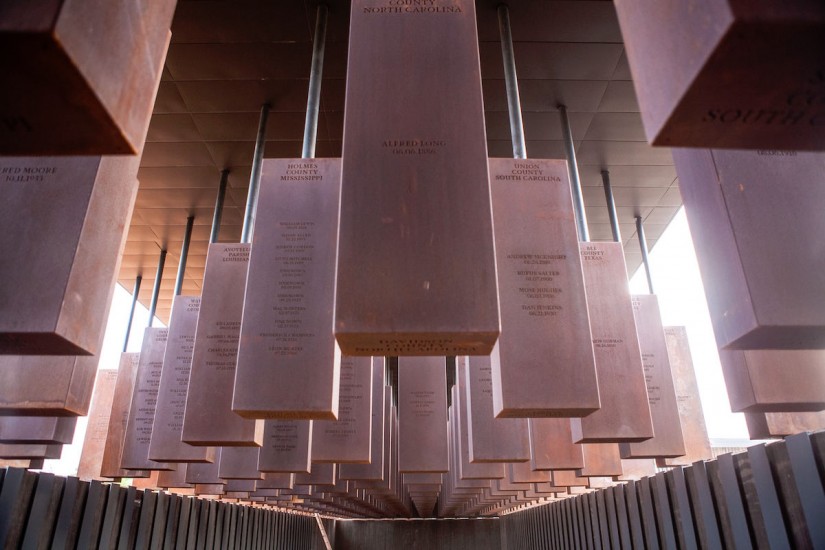The central structure of the memorial is a looming cloister where 800 steel columns hang from the roof. On each column is a state, a county, and the names of everyone lynched there, along with the dates of their deaths. The columns start at eye level, but as you walk through the memorial, the floor descends and the structures hang like so many victims. You, the visitor, become a kind of witness to the ritualistic murders that claimed at least 4,000 black Americans between 1877 and 1950: from the collapse of Reconstruction to the beginning of the end of Jim Crow. The scale of that killing becomes clear in an adjacent room, where replicas of those hanging steel structures are placed like coffins on the ground, arranged in alphabetical order for visitors who want to find the one that marks their town or county.
Racial hierarchy and inequality still exist today, but Jim Crow is gone and the public, socially sanctioned violence that defined the lynching era has largely disappeared. Which may lead some to ask why? Why dwell on this painful period of American history? Why fight to bring this unspeakable violence into the national consciousness? And why work to integrate it into public memory when lynching remains an incredibly fraught metaphor for racial conflict, with heavy symbolic baggage that weighs on any conversation around the subject?
